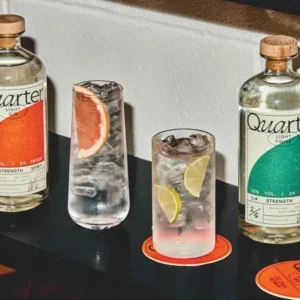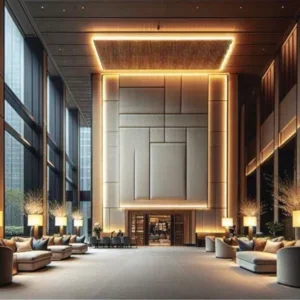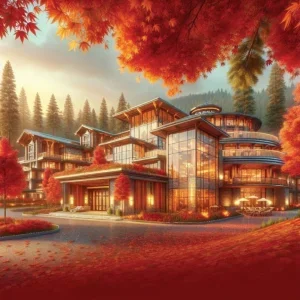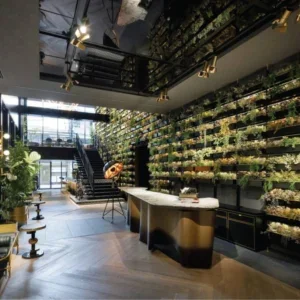The hospitality industry sometimes offers the public a unique kind of luxury, and there are few that have made such an art of it as Brian Williams. Anyone who has stayed at a Swire hotel in Asia knows that it offers top-quality service of the kind you can rely on, and now fans of the brand can enjoy the same experience in England.
Despite its reputation for service, however, Swire might be better known for its high-design principles. Among its portfolio of Asian hotels are the Opposite House in Beijing and the Upper House in Hong Kong, both celebrated by the travel and design press for providing spacious rooms and distinctive architecture in the heart of their respective cities.
Whereas the Asian properties employed Asian architects Andre Fu, Neri & Hu and Kengo Kuma, the Chapter brand is inspired by its local environs, housed in historic properties and filled with British art, textiles and furniture.
Made in Britain
Brian Williams, managing director of Swire, has just launched the first hotel in his British brand – the Montpellier Chapter Hotel, in Cheltenham. The refurbished venue takes over The Kandinsky, with its design overseen by Ken Shuttleworth and Make Architects.
The hotel has already been extended five times in the last century before Shuttleworth’s team created the three-storey crescent at the rear of the property. It also added 16 bedrooms to take the property up to a total of 62, creating a new and
Make’s brief was to breathe life back into the venue. Built in 1847, the house became the Savoy Hotel at the beginning of the 20th century. The property was acquired by the Alias Group in 1999, re-opened as the Kandinsky and ran for nine years before the new Chapter brand snapped it up.
The 2011 crescent wing of the property connects the 1950s bedroom wing and the turn-of-the-century restaurant wing, and encircles a central courtyard at the heart of the hotel in a coloured glass ‘veil’. Public spaces were remodelled to create a new snug, bar and garden room. Meeting rooms, a spa, private dining and a wine cellar have been added too.
Williams was impressed by the heritage of the building, he says, but never let it overwhelm the up-to-the-minute concept behind Chapter: "What I enjoy is the juxtaposition of old and new together – a Regency villa, restored with a contemporary crescent wing. That’s one of the most beautiful aspects – the new and the old don’t jar."
Better known for his contribution to modern urban architecture such as London’s ‘Gherkin’ and the Millennium Bridge, Ken Shuttleworth left Norman Foster’s firm in 2003 to found his own practice and has gone on to work on a range of architectural and interior design projects in the UK, China and the Emirates.
He had previous experience of working with listed Victorian buildings, having gutted a London townhouse and put it back together for a private client:
"It’s part of what we do – try and get back to a building’s former glory and add new things at the same time."
The hotel worked closely with local heritage offices to protect the Grade-II listed building and make sure that the building was refurbished sympathetically. The team even went as far as to use a Victorian method of plastering that used horsehair, in order to stay true to the original architecture.
Inside and out
Apart from the discovery of rotten timber, dry rot and uneven floors, Shuttleworth says the building work wasn’t problematic. He’s proud of the sustainability initiatives in the new hotel – from solar panels on the roof to an efficient boiler system and new airtight windows that better insulate it.
Make provided not only the architectural lead on the Chapter hotel, but the interior-design concept, including own-designed furniture. Make has its own interiors team within its main office and planned the interiors of the Chapter to fit with the wider architectural scheme.
"We apply the same rigour to interiors as we do to architecture," Shuttleworth explains. "We hope that the internal landscape will be the same as the external. It’s like a stick of rock – if you hack it open the name goes all the way through. We want a sense of integrity and we worked hard to make the Chapter hotel an interesting building."
Main villa bedrooms were decorated using a muted colour palette while Make installed new European oak joinery that they had designed themselves. In the crescent, the use of oak continues with wooden flooring, while open-plan bathrooms and bespoke furniture keep the impression modern.
British craftsmanship is a cornerstone of Chapter’s ‘contemporary English’ brand, in terms of artistry, architecture, sculpture and building materials. Investment in local products goes well beyond the kitchen – Bristolian ironwork provides the structure of the conservatory, and Bath stone has been used in the walls of the crescent extension.
Award-winning British designer Matthew Hilton’s ‘Hepburn’ sofa shares the reception area with sculptor Alison Crowther’s wooden ‘nut’ desk; over 160 pieces of art, some by Central St Martin’s students, line the corridors. Glass artist Isabel Hamm, previously commissioned by London’s Hospital Club, reinstated the conservatory and installed her own-design chandelier.
Brian Williams remarks that guests have become far more discerning about design and interiors since the boutique hotels trend peaked. "You only have to pick up a Saturday supplement to see dedication to design across lifestyles," he explains.
"People are into aesthetics and originality but they’re looking for something that’s quite deep, and has resonance with the local community, which is why we’ve spent a long time working with local British artists, artisans, designers, sculptors and furniture markers."
Attention to detail
He says the emphasis on design is a signal that the brand has paid attention to a niche in the post-recession industry: "The important thing is that we haven’t gone over the top. There’s restraint in the design, which feels appropriate for today. It’s not a six-star hotel, it’s not excessive – it’s an inclusive, accessible, interesting product."
Ultimately, Williams admits, design’s not the most important aspect of the Chapter brand: "My priority was creating the right service team. The demands in the UK and Asia are very similar I feel – guests want value, consistency, and they want to be treated as individuals. You could be staying in the most over-designed hotel in the world but if you’re not getting any personal service, it won’t work."
The second Chapter hotel in Exeter has already been planned for a Victorian building in the cathedral quarter – another Alias hotel, this time a former eye hospital. While Make is not working on this one, it has begun to plan the third hotel in the chain at the Avon Gorge Hotel in Clifton, Bristol. The UK hotel industry eagerly awaits the next chapter.






